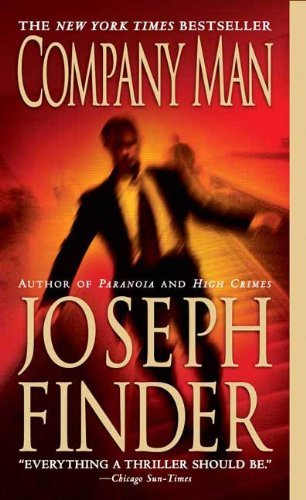2 Simple Pacing Techniques That Grab Reader Emotions
 Whether or not we care to admit it, much of what we do as writers is manipulation. With careful characterization, we manipulate readers into believing the characters lived before the book began and continue living long afterward. We create settings they long to escape to and plots that keep them wrapped up until long past midnight. When we’ve done our jobs right, we’ve manipulated our readers into turning one more page… one more page…
Whether or not we care to admit it, much of what we do as writers is manipulation. With careful characterization, we manipulate readers into believing the characters lived before the book began and continue living long afterward. We create settings they long to escape to and plots that keep them wrapped up until long past midnight. When we’ve done our jobs right, we’ve manipulated our readers into turning one more page… one more page…
As writers, we also manipulate readers’ emotions—assuming we know what we’re doing. It’s a tricky business. We can’t simply tell readers the character is crying and expect them to cry too. We can’t have a character laugh and expect the same from the reader. rarely elicits the response we’re looking for. This means we must learn some tricks of the trade.
“Show, don’t tell!” tops the list of writer tricks, followed by “Kill all adverbs!” and “Choose strong verbs!” But did you realize sentence and paragraph structure can also help elicit the emotions you’re looking for?
Here are a couple of subtle techniques—yes, manipulation techniques—your readers won’t even notice.
Pacing Technique #1: Short Sentence, Short Paragraph
Short sentences are quick to read. Short paragraphs leave a lot of white space. What happens when you throw them both together? You create a pace. Readers speed along at a quick clip, which mimics the emotion you’re trying to elicit.
 Take this clip from award-winning suspense writer Joseph Finder’s Company Man. Moments before this scene, the bad guy was snooping around the hero’s home. He’d already proven himself a threat, so the hero shot him. This scene happens afterward:
Take this clip from award-winning suspense writer Joseph Finder’s Company Man. Moments before this scene, the bad guy was snooping around the hero’s home. He’d already proven himself a threat, so the hero shot him. This scene happens afterward:
The man’s chest was not moving; he was not breathing. Nick leaned over him, the pistol now dangling in his left hand by his side. He placed his right forefinger on the man’s throat and felt no pulse. This was no surprise; the staring eyes had already announced that the maniac lay dead.
He’s dead, Nick thought. I’ve killed him.
He was suffused with terror. I killed this guy. Another voice in his head began to plead, defensive and frightened as a little boy.
I had to. I had no choice. I had no… choice.
I had to stop him.
Maybe he’s just unconscious, Nick thought desperately. He felt the man’s throat again, couldn’t find the pulse. He grabbed one of the man’s rough, dry hands, pressed against the inside of his wrist, felt nothing.
He let go of the hand. It dropped to the ground.
He poked again at the man’s chest with his toes, but he knew the truth.
The man was dead.
The crazy man, this stalker, this man who would’ve dismembered my children the way he butchered my dog, lay dead on the freshly seeded lawn, surrounded by tiny sprouts of grass that poked out sparsely from the moist black earth.
Oh, Jesus God, Nick thought. I’ve just killed a man.
He stood up but felt his knees give way. He sank to the ground, felt tears running down his cheeks. Tears of relief? Of terror? Not, certainly not, of despair or sadness.
Oh, please, Jesus, he thought. What do I do now?
What do I do now?
We’ve moved beyond the adrenaline of actually killing the man. Now we’re watching the hero’s response as he degenerates from intentionally protecting his household to realizing what he’s done. He’d never killed a man before, and within moments of realizing the bad guy was dead, he flashed through a myriad of emotions.
Let’s overlook some of the adverbs, emotion-naming, and the (deliberate) lack of italics for internal monologue, and look at the sentence structures.
In the first paragraph, Nick is stunned, unsure of his situation. The author portrayed this with longer sentences than what you’ll see as we go along. Notice he even used semicolons to avoid short sentences.
There are a couple of paragraphs like that, but as reality digs its fangs into him, you’ll see his sentences getting shorter. The paragraphs get shorter. Lots of white space on the page. Nick’s emotions are degenerating into panic and almost a despair—and we the readers are taking that plunge along with him.
Pacing Technique #2: Short Sentences, Long Paragraphs
 Putting short sentences in longer paragraphs creates a different effect. In the next excerpt, from Ethan Canin’s America, America, the hero’s mother died while he was away at college. He went to the funeral, then returned to college. Now, after a period of time, he’s back, visiting with his father:
Putting short sentences in longer paragraphs creates a different effect. In the next excerpt, from Ethan Canin’s America, America, the hero’s mother died while he was away at college. He went to the funeral, then returned to college. Now, after a period of time, he’s back, visiting with his father:
“Made a salad. Have you ever made a salad?”
“A couple times.”
“You wash the lettuce. Then you have to dry it. If you don’t dry it, the dressing comes out watery. I hate drying it. But I do it. On a paper towel. That’s the way she showed me how. She showed me a lot of this stuff, you know.”
“And then she would dry the paper towel on the windowsill,” I said, “so she could use it the next day.”
“That’s right. So I do it now too. Come look.”
He went back into the kitchen.
When I came up behind him, he said, “There it is,” and pointed to the sill.
There it was. Damp. Folded over the top stile of the sash to catch the sun.
“I’ve used the same one every day now since—since it happened,” he said. “She’d like that. Dries good as new.” He pulled the roll from the shelf. “They’re Scott, see? She always bought Scott. So now I do too.” Her apron was still hanging on the stove handle, and after he set the towels back he reached to straighten it. “Wish I could tell her.”
This starts off with the short sentences—terse communication between father and son. His father tends to use short sentences more often, as evidenced in the first long paragraph. The son’s line illustrates that he hasn’t felt the level of loss his father has. Then notice later: “There it was. Damp.” Short, as if the son has started to realize the loss himself.
Notice the father’s last paragraph. Along with the short sentences, he adjusts his wife’s apron still hanging on the stove handle. The emptiness he feels is almost tangible.
Whenever I present this excerpt in a speech, at least one person ends up swiping tears from her eyes. Usually more. Not once was the reader told “he cried.” Word choice and sentence structure illustrate his loss greater than any “telling” an author could do. And showing him adjust an apron he’d never stored away is the clincher.
Watch What You’re Reading
These are only a couple of the techniques using sentence and paragraph structures. I’ve discovered many more while reading. The best way to discover these techniques for yourself is to read, often and widely. Read books that teach you how to write, then read writers who have already excelled in their fields to see those techniques put into practice. If, as you read, you find yourself feeling some emotion, realize the authors manipulated that emotion from you. Then go back and see how they did it!
***
 Note From K.M. Weiland: This is a guest post by my critique partner Linda Yezak. To celebrate the release of her latest contemporary western romance Ride to the Altar, she is offering a prize package to one lucky entrant in her blog-tour giveaway! As pictured below, the prize includes a signed print version of her Circle Bar Ranch series, a 16-ounce Christian cowboy mug, a horseshoe picture frame, a Ph. 4:13 stretch bracelet, a cute set of magnetic page markers, and a Texas Rubiks cube just for fun.
Note From K.M. Weiland: This is a guest post by my critique partner Linda Yezak. To celebrate the release of her latest contemporary western romance Ride to the Altar, she is offering a prize package to one lucky entrant in her blog-tour giveaway! As pictured below, the prize includes a signed print version of her Circle Bar Ranch series, a 16-ounce Christian cowboy mug, a horseshoe picture frame, a Ph. 4:13 stretch bracelet, a cute set of magnetic page markers, and a Texas Rubiks cube just for fun.

All you have to do to enter is to leave a comment! The more posts you comment on during hertour, the better the chance you have of winning the drawing! If you’d like to play along, the next blog stop is with mystery/YA author, Mary Hamilton. The winner will be announced Monday, August 6, on Linda’s blog, 777 Peppermint Place.
The post 2 Simple Pacing Techniques That Grab Reader Emotions appeared first on Helping Writers Become Authors.



